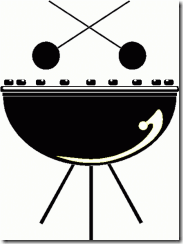Focusing on Rhythm will be a life time effort as a musician. I don't think that you ever stop improving your rhythm skills. In playing and learning music a vast majority of musicians struggle with timing, especially when playing solo.
Once again I'm reading “The Music Lesson” by Victor Wooten and the chapter topic is timing or more specifically rhythm and tempo.
[asa]0425220931[/asa]
For me rhythm can be a fleeting thing, but as I read this chapter it brings back a focus as to what both of my mentors have taught me. That being focus and speed.
Speed – Tempo of your Rhythm
 When playing a new song you typically start with the notes and chords. You learn the notes and the chord progression sequence, then you come back to apply the rhythm.
When playing a new song you typically start with the notes and chords. You learn the notes and the chord progression sequence, then you come back to apply the rhythm.
The issue as I see it is that you don't put enough effort into recognizing the pattern and underlying rhythm as you apply it. As you become familiar with the notes you have a tendency to jump in and try to play at speed immediately.
Some of you may even be able to pull it off. For many of us we think we are doing great. However, if you were to record it you'd hear that all that timing is just a little off.
Slowing Down to Improve Rhythm
One of the first things that that changed for me was when I learned to slow down and really work the notes and rhythm together. This was especially effective when playing some of the classical works where 16th note phrases had 8th note and rests thrown in for effect.
Slowing down, focusing on rhythm, and counting out loud will allow you draw your focus to the rhythm continuum. Which should immediately improve your performance of the material.
As you pull it together you can gradually increase your tempo.
Playing Fast?
Some music is meant to be played fast and invokes a certain feeling. If you haven't worked on the rhythm slowly to start you may struggle a lot to get to tempo.
The other issue with fast is that even music you would think should be played fast may even be better at a slower speed.
The example I'm thinking of is compositions of Bach, some of the great performances were by musicians that slowed down some of that work and were able to apply technique that enhanced the arrangement.
Or in other words were able to apply more expression as I've talked about in previous posts.
Focusing First On Rhythm
As stated above the learning of new music will start with notes and chords then applied rhythm, however, the one method I adopted was to break the applied rhythm to played notes.
That is focus on the rhythm without thought to the pitch of the note. You tap out the rhythm and get into the groove. If a 4/4, tap the basic beat. Then add the subdivisions such as the 8th notes, then 16th notes if that will be in your tune.
Once you feel the continuum then you can start tapping out the lines of notes. This approach is like listening to the drummer that provides the rhythm and you fit your music into it.
Placing Your Notes
Once you've got the rhythm continuum it's a matter of placing those notes that you've already learned on the specific beat or sub beat.
Sure you can tap your foot and keep the basic beat, but often you need to count out the sub parts such as: 1 and 2 and; or 1 e & a 2 e & a. Thus knowing exactly where to place those notes.
Focusing on Rhythm Alone
As a new student your focus is most often on learning the theory including the notes, the chords, and scales. You don't necessarily spend enough time on just rhythm focus. Ok, drummers and even sometimes bass players get the exception.
One of the leaps in my learning of music was when I walk away from the keyboard and focused only on rhythm. I'd go for a walk and count the steps as rhythm, then I'd tap my thighs with various accents for the beats or sub-beats. Try that with a swing sometime, you'll be in for a treat.
Rhythm Courses
The music timing area is one that sometimes a crash course is needed to get you going.
The Rhythm Workshop was designed for new students or any student struggling with rhythm to help them learn to get into the continuum away from their instrument.
Victor Wooten also has a workshop called the Grove Workshop that is focused on improving musicians rhythm skills.
[asa]B001DPC4I2[/asa]
Just a general comment about your bloggs and course. It’s all so helpfull. I’m starting lesson 10 and feel everything getting over my head. I’ll continue doing what you say, including practicing rythm a few minutes daily.
Thank you.
Keep up the good work Carlos. You’re in the course where things start to get more intense. Just remember to take your time. Go over things a couple of times. If you get stuck let me know,
Most Excellent on working rhythms, a little everyday goes a very long way. Just know that it’ll be continuous effort for many years to come.
re: rythm blog
I used to think I did not have time to practice rythms daily. Yesterday, I tried to practice at the gym in between sets. It worked!
Excellent Carlos, I was hoping that bit of advice would help you. It’s great to hear you found a way to apply it.